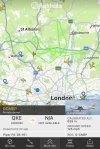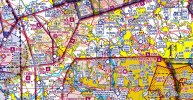ADS-B Exchange has been acquired by private equity firm Jetnet, itself a subsidiary of PE firm Silversmith Capital Partners.
JetNet acquires flight tracker ADS-B Exchange
Friday, 27 January 2023
JetNet's resources will accelerate the growth of ADS-B Exchange while allowing it to maintain its enthusiast roots and unfiltered data. This is the first of several anticipated acquisitions by the intelligence provider.
Aviation data and market intelligence provider JetNet has acquired ADS-B Exchange, one of the world's largest networks of ADS-B/Mode S/MLAT feeders and providers of real-time and historical flight data. The acquisition is the second of what the company anticipates will be several future acquisitions as JetNet expands its data-driven product offerings for the aviation industry.
Founded in 2016 by Dan Streufert, ADS-B Exchange aggregates approximately 750,000 messages per second worldwide via receivers hosted by aviation enthusiasts around the world. The acquisition of ADS-B Exchange will enable JetNet to expand its flight data solutions with real-time information.
“ADS-B Exchange was founded as the go-to resource for aviation and flight-data enthusiasts,” says president and founder Dan Streufert. “Joining forces with JetNet is the perfect match as we look to meet the business needs of our users while maintaining our enthusiast roots and unfiltered data. With a long history of providing highly valuable data to the aviation industry, JetNet offers the resources we need to accelerate our growth.”
Like JetNet, ADS-B Exchange serves numerous constituents across the aviation industry, including MRO, airport operations and aircraft leasing. In addition, its real-time data is used by dozens of commercial customers across numerous end markets, including aerospace and defence, government, research and academia, and financial services.
“We are committed to providing our customers with innovative product offerings that provide the information and intelligence they rely on to make critical business decisions,” says JetNet CEO Derek Swaim. “We've long admired ADS-B Exchange and know how strategic the company's real-time data offerings are to the aviation industry. Dan has done an incredible job building a fast-growing business that customers love. We believe he and the ADS-B Exchange platform will bring significant value to our customers.”
This casts some doubts on its future, since a) the investors likely didn't do this out of the kindness of their hearts and will want to see a return on their investments, which seems at odds with the platform's current 'all the data for free' format, and b) the platform sources its data from a large number of volunteers, and by the sound of things many of them are not willing to keep feeding it for free to what's now essentially a hobbyist's project turned business enterprise, and if this picks up steam then the new owners will eventually have barely any data to display.
In fact, a lot of feeders have already gone elsewhere. The software itself is open source and a non-monetised replacement has sprung up at
- I don't know who's behind this, how many people will eventually upload their feed there or if it will even exist for the longer term but this appears to be the most promising alternative for the time being. As you can probably imagine, things are in a state of flux right now. Another site to keep an eye on is
.



